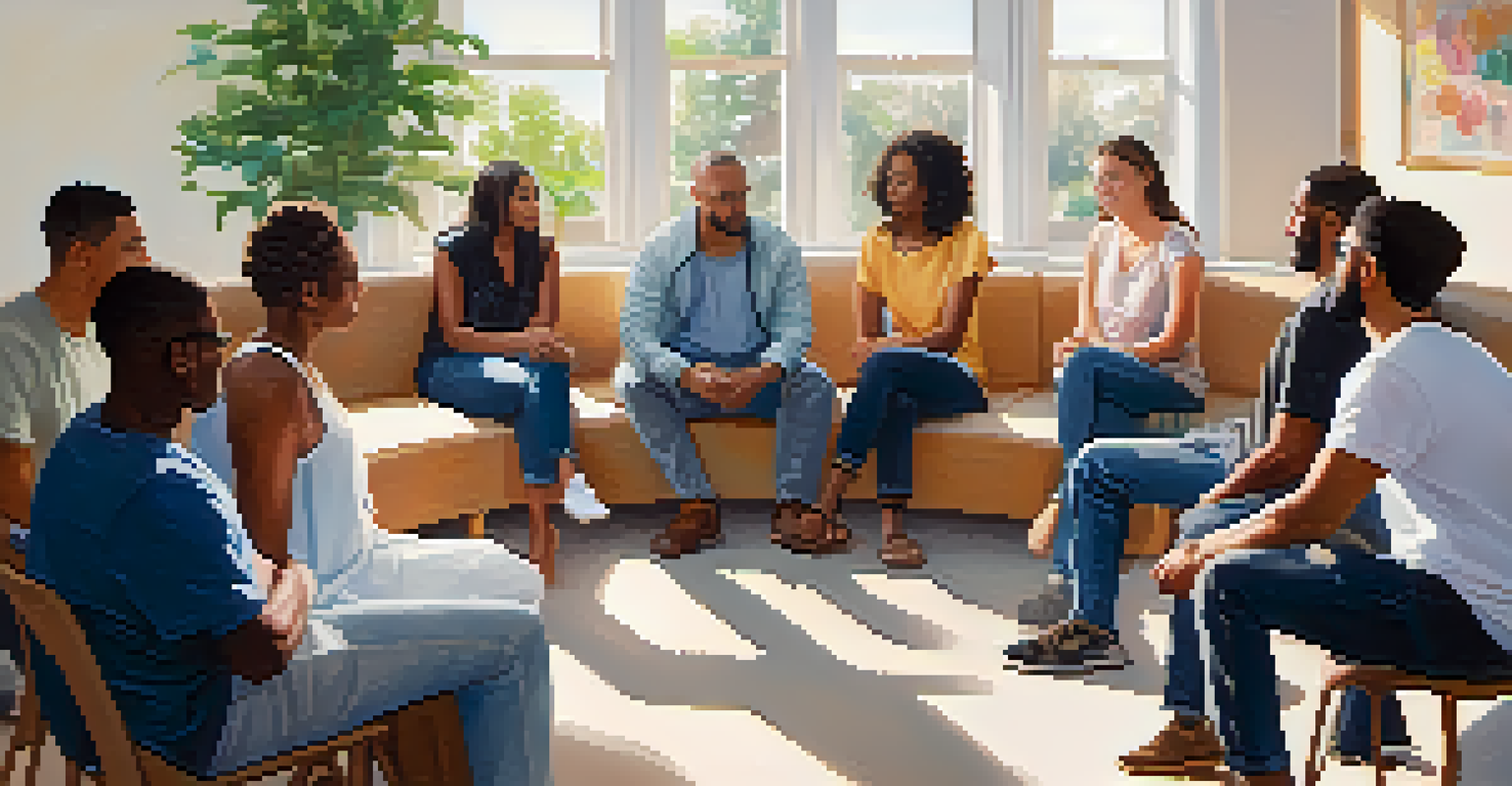Balancing Spirituality and Therapy in Ayahuasca Integration

Understanding Ayahuasca: A Blend of Tradition and Therapy
Ayahuasca is a powerful brew originating from the Amazon, traditionally used for spiritual healing and insight. It combines the vine Banisteriopsis caapi with the leaves of the Psychotria viridis, creating a unique psychoactive experience. This potent mixture has recently caught the attention of those seeking therapeutic benefits, leading to a growing interest in its integration into modern mental health practices.
The medicine is not the Ayahuasca; the medicine is the connection you have with yourself and others while you are in ceremony.
Many people report profound experiences during ayahuasca ceremonies, offering insights that can lead to healing emotional wounds. However, understanding the spiritual context of these experiences is crucial to fully benefit from them. This is where the conversation around balancing spirituality and therapy becomes essential.
By merging ancient wisdom with contemporary therapeutic techniques, individuals can navigate their experiences more effectively. This balance can enhance the integration process, helping to ensure that insights gained during ceremonies are utilized in everyday life.
The Role of Spirituality in Ayahuasca Experiences
Spirituality often plays a significant role in how individuals perceive and process their ayahuasca journeys. Many view these experiences as a connection to something greater than themselves, leading to personal revelations and a sense of purpose. This spiritual component can provide a grounding framework for understanding complex emotions and life challenges.

However, spirituality can also be a double-edged sword. Without proper guidance, individuals might be overwhelmed by their experiences or struggle to integrate insights into their lives. Therefore, having a clear understanding of one's spiritual beliefs and how they relate to the ayahuasca experience is key to successful integration.
Ayahuasca Blends Tradition and Therapy
The integration of ancient ayahuasca practices with modern therapeutic techniques can enhance emotional healing and self-discovery.
Moreover, spiritual beliefs can shape how individuals interpret their encounters with the plant medicine. By recognizing the interplay between personal spirituality and the therapeutic process, individuals can create a more holistic approach to healing and self-discovery.
The Therapeutic Benefits of Ayahuasca Integration
Ayahuasca has shown promise in treating various mental health conditions, including depression, anxiety, and PTSD. Many participants report feeling a deep emotional release, leading to lasting changes in their mental and emotional states. This therapeutic aspect is often enhanced when combined with professional guidance and support.
Ayahuasca is a journey, not a destination. Integration is the key to unlocking its true potential.
Therapists familiar with ayahuasca integration can help individuals process their experiences and translate insights into actionable steps. This support can empower individuals to confront unresolved issues and develop healthier coping mechanisms. In this way, therapy acts as a bridge between the spiritual experience and everyday reality.
By integrating ayahuasca experiences into therapy, individuals can achieve a deeper understanding of themselves. This can lead to lasting transformations, reinforcing the idea that healing is both a spiritual and psychological journey.
Finding the Right Support: Therapists and Shamans
Choosing the right guide for your ayahuasca journey is crucial. Both therapists and shamans can offer valuable support, but their approaches and philosophies may differ significantly. Shamans often focus on the spiritual aspects of the experience, while therapists may emphasize psychological integration.
To create a balanced integration process, individuals should seek professionals who respect both spiritual and therapeutic dimensions. This can foster a deeper understanding of the experiences and help individuals navigate the emotional terrain that often follows an ayahuasca ceremony.
Spirituality Shapes Healing Experiences
Personal spirituality significantly influences how individuals process ayahuasca journeys, highlighting the need for a supportive framework.
Moreover, combining the wisdom of shamans with the expertise of therapists can provide a more holistic approach to healing. This collaboration can enhance the integration journey, ensuring that individuals feel supported on all fronts.
Common Challenges in Ayahuasca Integration
Integrating ayahuasca experiences can come with its own set of challenges. Many individuals find it difficult to translate the profound insights gained during ceremonies into their everyday lives. This can lead to feelings of confusion, frustration, or even disillusionment if expectations are not met.
Additionally, some may struggle with integrating spiritual experiences into a scientific framework, especially if they are accustomed to traditional therapeutic approaches. This clash can create internal conflict, making it harder to fully embrace the healing journey.
Recognizing these challenges is the first step toward overcoming them. By fostering open communication with therapists or support groups, individuals can share their struggles and gain insights from others who have walked a similar path.
Practical Steps for Effective Integration
An effective integration process begins with self-reflection. Journaling can be an incredibly useful tool to capture thoughts and feelings after an ayahuasca ceremony. Writing down insights can help individuals process their experiences and clarify what they mean in the context of their lives.
Engaging in regular discussions with a therapist or support group can also enhance the integration process. These conversations provide a safe space to explore feelings, share experiences, and gain new perspectives. Moreover, finding a community of like-minded individuals can foster a sense of belonging and support.
Support is Key for Integration Success
Ongoing support from therapists, shamans, and community is essential for effectively integrating insights gained from ayahuasca ceremonies.
Lastly, incorporating mindfulness practices, such as meditation or yoga, can help ground individuals. These practices can create a deeper connection with oneself, making it easier to integrate spiritual and therapeutic insights into daily routines.
The Importance of Ongoing Support and Community
Integration doesn't end after a single therapy session or ceremony; it's an ongoing process. Having a support system in place can significantly enhance this journey. Friends, family, or support groups can provide encouragement and understanding as individuals navigate their insights and emotional shifts.
Community can also offer shared experiences, reducing feelings of isolation. Knowing that others have faced similar challenges can validate one’s feelings and experiences. This sense of camaraderie can be incredibly powerful in fostering healing and growth.

In essence, ongoing support and community create a safety net for individuals as they explore the depths of their healing journey. This network encourages the idea that we are all in this together, making the integration process less daunting and more enriching.